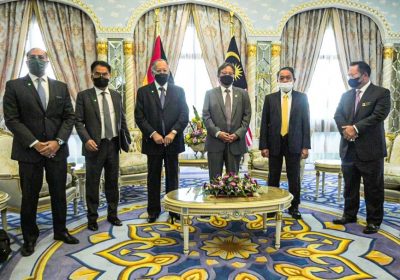LIKE the Sarawak government and many ordinary Sarawakians, the state’s tour and travel operators and the business community in general seem to finally have had enough of our national airlines.
They joined the growing chorus publicly criticising the airlines, in particular AirAsia.
What caused the local travel industry to finally snap was the decision by AirAsia to abruptly cancel the Kuching-Shenzhen flight at the end of the month, without prior consultation with the state government (which reportedly subsidised the flights) or local industry players.
Various reasons have been given for the cancellation but none are very convincing.
This is not the first time the low-cost airline has left Sarawak air travellers and travel industry in a lurch.
Some years earlier, it, too, abruptly cancelled Kuching-Jakarta flights despite promising load factors.

The Shenzhen flight cancellation will only add fuel to the long-held suspicion that AirAsia has never been serious about wanting to develop Kuching as another regional air hub.
This is presumably so as not to jeopardise its other hubs in the country, principally Kota Kinabalu and Johor Baru, which now siphon off many of Sarawak’s outbound air passengers (to the greater costs and inconvenience of Sarawakian travellers intending to go abroad, of course).
A respected local travel industry veteran, Philip Yong, minced no words when he took to calling AirAsia “very insensitive” and taking action which smacked of high-handedness this week, in relation to the news of the Shenzhen flight cancellation.
“Tourist arrivals from China increased by 15 per cent to 45,000 last year compared with the previous year.
“They (AirAsia) cited load factor but the load was 75 per cent for the last four months,” Yong was quoted in the media.
With local industry players, the Sarawak Tourism Board and the Sarawak Convention Bureau joining AirAsia at a “Visit Sarawak Year” gig in Shenzhen just last December, many will be left wondering what the point of the whole exercise was if just a month later, the airline saw fit to cancel the flight.
“Things are gradually picking up and suddenly they (AirAsia) ‘close shop’. It’s annoying,” a clearly exasperated Yong said.
Yong also noted that with the Kuching-Shenzhen flight cancellation, travellers between both cities will need to spend at least double the time (from less than three hours direct) on air travel, including waiting time in Kuala Lumpur.
This does not include paying for two-sector travel in each direction, instead of one-sector, usually also doubling the cost of air travel. The same, of course, applies to most other regional destinations that Sarawak is currently deprived of direct air access to.
Such exasperation is so widespread that Sarawak Chief Minister Datuk Patinggi Abang Johari Abang Openg recently rehashed the idea of the state starting its own airline. Despite the general frustration, the state government will need to tread carefully before proceeding with such an idea.
That said, the idea need not be far-fetched if the state devised a smart air-transport strategy that meets the long-frustrated aspirations of air travellers from and into Sarawak while squeezing the national carriers where it matters to them: raking in profits from Sarawak’s own travellers.
The state airline must compete head-on with the existing national carriers in the highly lucrative Kuching-Kuala Lumpur sector which is also a major reason why there is little incentive for these carriers to develop the state as a regional air hub.
Additionally, the state government may need to impose a poll tax on the existing airlines for each passenger it takes out of the state to third destinations as a way to encourage (at least initially) local Sarawakians and others to use their own new airline when it mounts direct flights to regional cities from the state. If necessary, non-state airlines may be restricted in the number of flights they can mount out of the state to other domestic destinations as a way to protect the state’s own air carrier.
The state authorities will have very legitimate reasons to adopt such a “Sarawak for Sara-wakians” strategy in view of the increasingly obvious and cavalier attitude of national airlines — despite countless official appeals and incentives offered — to better serve the needs and convenience of air travellers into and out of the state as well as do the airlines’ own bit to help increase Sarawak’s foreign tourist arrivals.
Local airlines must henceforth be aggressively pinned down to contribute to balanced national development in the civil aviation sector so Sarawakians do not continuously feel being hard done by.
[Source: “Should Sarawak start an airline?” published by New Straits Time Malaysia]Photo Credits: New Straits Time Malaysia




